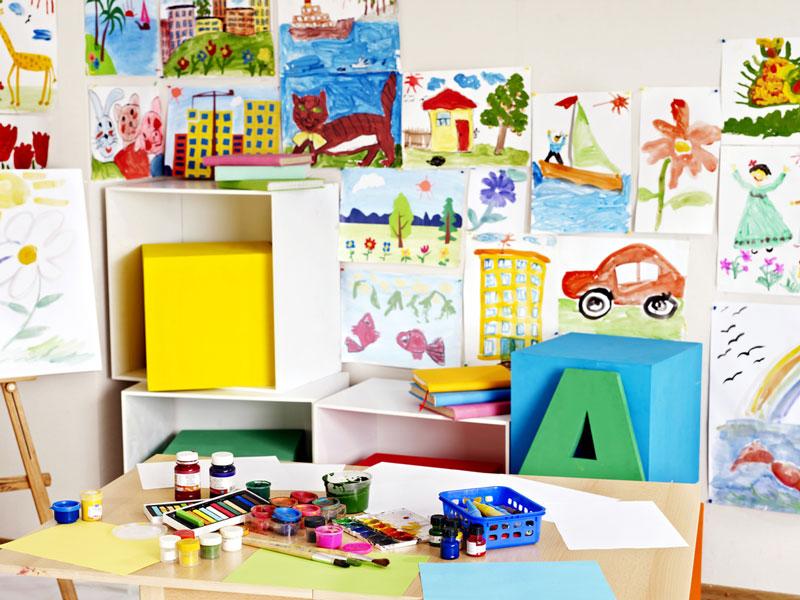When it comes to decorating elementary classrooms, less may be more.
A study with a small group of kindergarten students found that kids in highly decorated classrooms were more distracted, spent more time off-task, and demonstrated smaller learning gains than when the decorations were removed.
“Young children spend a lot of time—usually the whole day—in the same classroom, and we have shown that a classroom’s visual environment can affect how much children learn,” says Anna V. Fisher, lead author and associate professor of psychology in the Dietrich College of Humanities and Social Sciences at Carnegie Mellon University.
“We do not suggest by any means that this is the answer to all educational problems. Furthermore, additional research is needed to know what effect the classroom visual environment has on children’s attention and learning in real classrooms,” Fisher says.
“Therefore, I would suggest that instead of removing all decorations, teachers should consider whether some of their visual displays may be distracting to young children.”
Staying on Task
For the study, 24 kindergarten students were placed in laboratory classrooms for six introductory science lessons on topics they were unfamiliar with. Three lessons were taught in a heavily decorated classroom, and three lessons were given in a sparse classroom.
The results showed that while children learned in both classroom types, they learned more when the room was not heavily decorated. Specifically, children’s accuracy on the test questions was higher in the sparse classroom (55 percent correct) than in the decorated classroom (42 percent correct).
“We were also interested in finding out if the visual displays were removed, whether the children’s attention would shift to another distraction, such as talking to their peers, and if the total amount of time they were distracted would remain the same,” says Karrie E. Godwin, a PhD candidate in psychology and fellow of the Program in Interdisciplinary Education Research (PIER).
However, when the researchers tallied all of the time children spent off-task in both types of classrooms, the rate of off-task behavior was higher in the decorated classroom (38.6 percent time spent off-task) than in the sparse classroom (28.4 percent time spent off-task).
The researchers hope these findings lead to further studies into developing guidelines to help teachers optimally design classrooms. The study appears in Psychological Science.
The Institute of Education Sciences, part of the US Department of Education, funded the research.
Source: Carnegie Mellon University. Republished from Futurity.org under Creative Commons License 3.0.
*Image of “classroom“ via Shutterstock




